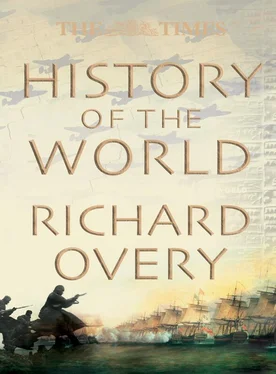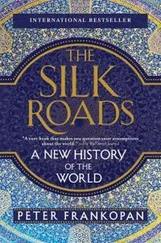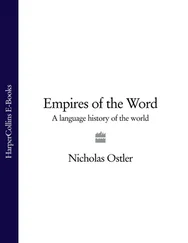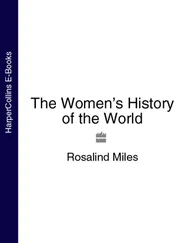300 BC TO AD 1300
PEOPLES OF MESOAMERICA
Many societies in the Americas changed little in the 2000 years before 1300. In Mesoamerica, however, complex societies were developing by the end of the first millennium BC. They then underwent cycles of growth and decline that included periods of outstanding intellectual and artistic achievement.
By 300 BC, almost every way of life that the Europeans would later encounter had developed in Mesoamerica: while some societies in northern Mexico continued to live by hunting, fishing and gathering, most had adopted farming and some were developing into states that extended their influence by trade or force.
THE RISE OF TEOTIHUACÁN
Earlier developments in Mesoamerica were eclipsed in about AD 100 by the sudden rise of Teotihuacán. The city grew to about 200,000, much larger than cities in the Old World at the time. There are doubts about the nature of the city’s economy but the centre—with the Temple of Quetzalcoatl and the Pyramids of the Sun and the Moon—was clearly planned for rites that involved human sacrifices. The city also possessed thousands of artisans who produced many items for foreign trade, including many articles made of obsidian, which they obtained from mines they controlled at Pachuca. Whether or not in association with trade, the Teotihuacános’ influence spread widely through present-day Mexico and Guatemala and was apparent in their distinctive pottery, crafts and architecture. In the 7th century AD Teotihuacán was attacked either by insiders or outsiders, or both, and its power destroyed, although it continued to function as a town.
THE RISE OF THE MAYA
At the same time the small but brilliant kingdoms of the Maya flourished. Their capitals were pyramid-studded ceremonial centres with densely settled suburbs. Voluminous inscriptions reveal a sophisticated but typically Mesoamerican concern with astrology. For a long time it was not understood how these cities in a tropical forest were supplied with food. It now seems they built terraces, drained fields and made extensive use of game and fish. However, whether it was on account of the chronic wars that are recorded, or of popular discontent, or of environmental degradation by excessive population—or of all of these factors—most of the towns were abandoned between AD 790 and the mid-9th century. Many districts revived later in what is known as the Post-Classic period, but the Maya never regained their grandeur.
THE RISE OF THE TOLTECS
The Maya “collapse” followed the dissolution of Teotihuacán in about 700. But between these poles of power a new generation of thriving towns had emerged, including some of Teotihuacán’s protégés, such as Cholula, which established their independence from the traditional order. They appear to have been eclipsed in turn by the Toltecs, soldiers and probably traders, whose influence subsequently extended throughout Mesoamerica and beyond. In about 1175 their reign, too, ended, possibly on account of refugees from the north driven south by changing climatic conditions. Meanwhile, two Nahua-speaking migrations from central Mexico had extended Mesoamerican influence to societies on the Pacific coastal plain as far south as Costa Rica.
300 BC TO AD 1300
PEOPLES OF EARLY NORTH
AMERICA
The early cultures of North America were predominantly agrarian-based, with small communities developing in and around areas where the natural environment provided rich sources of food. By AD 700 three distinct cultures had developed. These were more urban and culturally diverse, and they were heavily influenced by Mexican civilizations. By the beginning of the 15th century, however, these cultures were in decline.
By 300 BC, the area stretching from Ohio to West Virginia had already been settled. Small communities and villages developed in river valleys, where natural food resources (such as mammals, birds, fish and vegetable foods) were both abundant and close at hand. Horticulture also developed around this time: sunflowers, marsh elder and squashes were cultivated.
Archaeological evidence from this period points to the existence of chiefdoms: the elaborate burial sites, such as that at Hopewell in Ohio, are excellent indicators of the social, religious and trade networks through which imported goods, as well as ideas, filtered. By AD 700, three distinct cultural traditions had emerged in southwestern North America: the Hohokam, Mogollon and Anasazi. Their area of influence covered much of the territory that is now Utah, Colorado, Arizona and New Mexico, and also extended south into Sonora and Chihuahua.
The Hohokam, Mogollon and Anasazi cultures all had contact with Mexico, and this contact became a significant influence on their development. Excavations have revealed ball courts and Mesoamerican-style mosaics, bracelets, effigy vessels and figurines. The architectural layout of the towns (which were used as economic, religious and trading centres) also reveals Mexican influence, and the Mexicans may even have established Casas Grandes in Chihuahua as the “capital” of the Mogollon culture.
The first true towns in North America appeared in the Middle Mississippi Valley from AD 700. They were characteristically built on large, flat-topped, rectangular mounds, which supported temples and mortuary houses for the elite society and more modest timber houses for the town’s merchants and officials. A town generally consisted of up to 20 mounds grouped together around a plaza and enclosed by a defensive wooden stockade. The towns had substantial populations: it is estimated that some reached 10,000 inhabitants.
The large rural population (about 200 people per square km) was based predominantly in the fertile river valleys surrounding the towns. Again, Mexican influence here is evident: after AD 700, a hardier strain of maize, popular in Mexico, was introduced and cultivated. In addition, the introduction of the bow and arrow to replace the spear-thrower and dart meant more efficient hunting of the abundant game on the uplands.
By the time 16th-century French explorers discovered the area, the population had advanced to a ranked, matrilineal society headed by a chief who ruled four well-defined classes. Archaeological evidence from Mississippi to Minnesota and from Oklahoma to the Atlantic coast also bears witness to the widespread existence of a religion known as the Southern Cult. Reaching its peak in 1250, the cult was strongly influenced by Mexican practice, especially in regard to the importance of the four cardinal points and the significance placed upon death.
Disease, caused by unhealthy overcrowding and poor sanitation, heralded the slow decline of the early North American cultures after AD 1300. However, their demise was a but a pale foreshadowing of the destruction that was to befall these cultures when Europeans arrived in the New World.
TO 475 BC
THE BEGINNINGS OF CHINESE CIVILIZATION
Geographically and climatically China has a range of favourable conditions for human settlement, which took place 500,000 years ago. A turning point was reached at about 1600 BC when China entered the Bronze Age. It was then that Chinese culture took shape, as written languages, philosophies and stable socio-political and economic structures gradually emerged.
China has been inhabited continuously by humans since very early times. Remains of early hominines, which are similar to those from Java, have been found across large areas of southeast China. In about 500,000 BC Peking Man— Homo erectus —was living around Pohai and in the southeast and possibly in central and southern China as well. Homo sapiens first appeared in Palaeolithic cultures in the Ordos region, in the north and in the southwest in about 30,000 BC. Later Mesolithic cultures flourished in the north, south and southwest and in Taiwan.
Читать дальше










